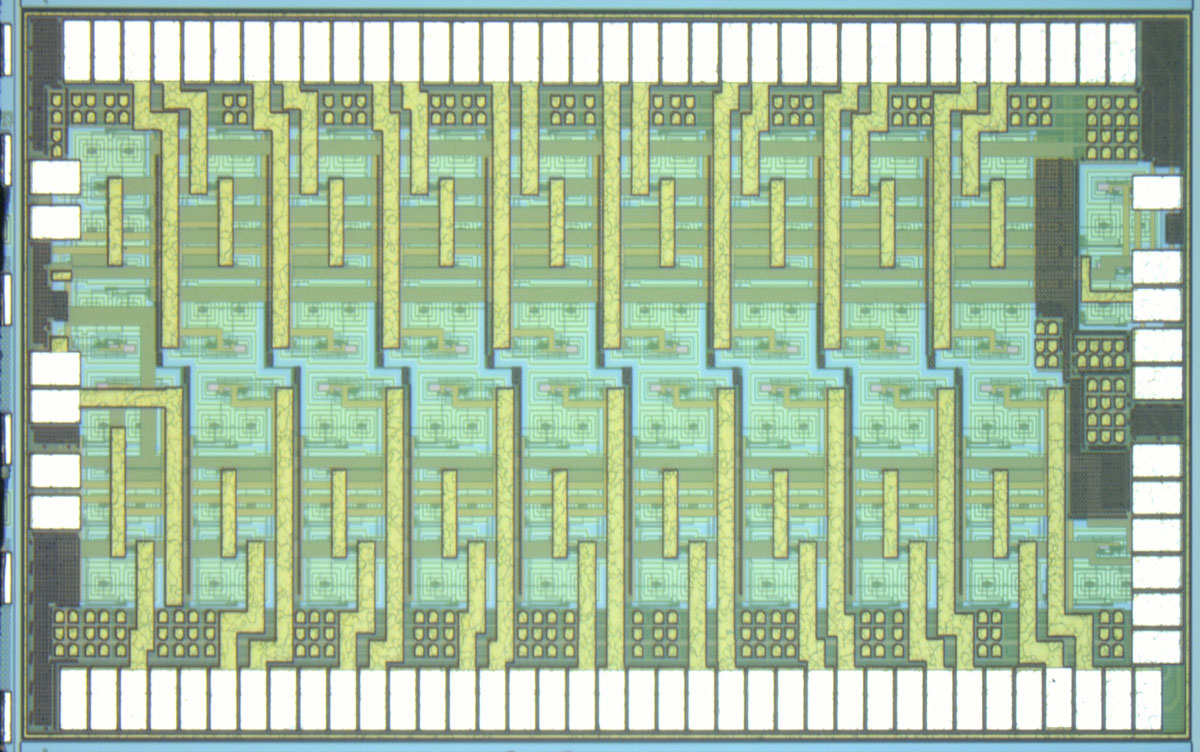SAN FRANCISCO – Feb. 19, 2025 – Researchers at
University of California San Diego (UC San Diego) and CEA-Leti today unveiled a groundbreaking microactuator driving system, combining innovative solid-state battery technology with novel integrated circuit designs for 2-in-1 storage and voltage boost conversion techniques.
Presented in a paper at ISSCC 2025, “An Autonomous and Lightweight Microactuator Driving System Using Flying Solid-State Batteries”, the breakthrough addresses a critical challenge in powering micro-actuators: delivering high voltages (tens to hundreds of volts) efficiently in a lightweight, compact form.
By dividing a solid-state battery – which is already needed in the system – into smaller units and dynamically arranging them, the system achieves high-voltage outputs without traditional bulky components like capacitors or inductors. This results in a highly compact and lightweight design ideal for micro flying robots and embedded medical devices.
“The design uniquely integrates energy storage and voltage conversion, setting a new standard in efficiency and autonomy for small electromechanical actuators. In addition, by leveraging a novel battery matrix, this is the first demonstration of such a system for ultra-low-power, high-voltage applications,”
said Gaël Pillonnet, scientific director of CEA-Leti’s Silicon Component Division, and a lead author of the paper.
“Microdrones and microrobotic systems already require a battery, and so it costs us next to nothing to use a solid-state battery, split it up into smaller pieces, and dynamically rearrange the small pieces to generate the voltages we need. This is the smallest and lightest way we could think of to generate the high voltages needed to run these sorts of systems,”
said Patrick Mercier, Professor of Electrical and Computer Engineering, co-Director of the Center for Wearable Sensors, and Site Director of the Power Management Integration Center at UC San Diego.
Breakthrough Solid-State Battery Technology
Unlike conventional batteries, which lose energy density when scaled down, the solid-state batteries in this system maintain high energy density even when miniaturized and split into small parts to form a matrix. This enables ultra-lightweight systems with scalable performance. The paper presents a first proof of concept showing up to 56.1V voltage generation capability at up to a few Hz of operating frequency needed by microactuation systems.
The concept has been validated with early commercial solid-state batteries and shows promise for even greater performance using advanced versions developed at CEA-Leti. Extrapolated data indicates that the system can scale down to weights as low as 14mg without sacrificing efficiency, making it a key technology for weight-constrained autonomous robots and small embedded devices for medical applications.

« Die shot of an integrated circuit controlling a microbattery matrix, specially designed to explore a 2-in-1 storage and voltage boost technique. »
_Light.jpg)
« Senior author Patrick Mercier (left), a professor in the Department of Electrical and Computer Engineering, and first author Zixiao Lin, an electrical engineering Ph.D. student, both of UC San Diego, verify the driving system on a test platform. » Credits: David Baillot/Jacobs School of Engineering
About CEA-Leti (France)
CEA-Leti, a technology research institute at CEA, is a global leader in miniaturization technologies enabling smart, energy-efficient and secure solutions for industry. Founded in 1967, CEA-Leti pioneers micro-& nanotechnologies, tailoring differentiating applicative solutions for global companies, SMEs and startups. CEA-Leti tackles critical challenges in healthcare, energy and digital migration. From sensors to data processing and computing solutions, CEA-Leti's multidisciplinary teams deliver solid expertise, leveraging world-class pre-industrialization facilities. With a staff of more than 2,000 talents, a portfolio of 3,200 patents, 11,000 sq. meters of cleanroom space and a clear IP policy, the institute is based in Grenoble, France, and has offices in Silicon Valley, Brussels and Tokyo. CEA-Leti has launched 76 startups and is a member of the Carnot Institutes network. Follow us on
www.leti-cea.com and @CEA_Leti.
Technological expertise
CEA has a key role in transferring scientific knowledge and innovation from research to industry. This high-level technological research is carried out in particular in electronic and integrated systems, from microscale to nanoscale. It has a wide range of industrial applications in the fields of transport, health, safety and telecommunications, contributing to the creation of high-quality and competitive products.
For more information:
www.cea.fr/english
About the Jacobs School of Engineering at University of California San Diego
The Jacobs School of Engineering at the University of California San Diego offers excellence at scale in research, education, public service, and technology transfer. The Jacobs School of Engineering is the #8 public engineering school in the nation and #12 in the nation overall. With 279 faculty and more than 9,600 students in six departments, the Jacobs School of Engineering is the largest engineering school in California. The Jacobs School of Engineering ranks #1 in California, and #1 on the West Coast, for research expenditures. Our entrepreneurial faculty lead teams that work across disciplines and industries to tackle the toughest challenges that no lab, department or company can handle alone. At the UC San Diego Jacobs School of Engineering, we make bold possible.